Menu
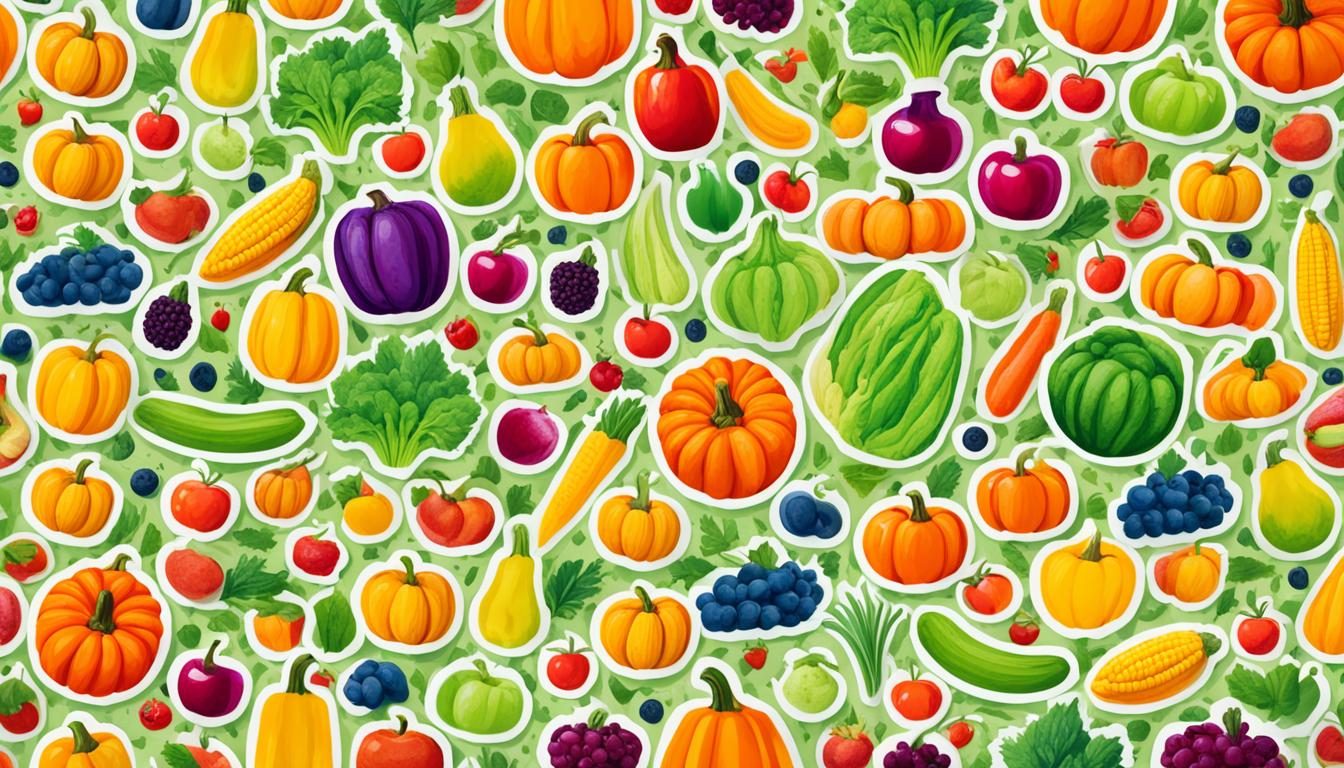
Did you know personalised photos of CSA farmers can lead to twice the click-throughs? This is much more than generic, product-focused ads. It shows how powerful it is to connect personally on social media. Especially when promoting farm-to-table marketing.
Social media is key for building relationships with customers. It connects them directly with farm products. Farmers can quickly share what’s fresh and available. They get instant feedback and learn what customers like or want in the future.
On platforms like Facebook, farms can create searchable profiles. This offers lots of exposure at a low cost. In fact, four farms combined spent only $1042 on ads. This is an average of $261.41 per farm, well within the $300 limit. An ad like “Our Farm to Your Table” can cost just $0.84 per click. It can reach an incredible 28,410 users. This proves the huge impact of social media for promoting sustainable food.
Today, social media is key for promoting farms. In the US, 68% of adults use Facebook. Meanwhile, over 90% of millennials are active on various social platforms. This makes social media the perfect place to market and promote fresh produce.
Social media is a great way for farmers to connect with consumers. It allows for direct, ongoing communication. By showing their daily work, farmers can interest city folks. This builds a feeling of community and connection, important for selling produce. Plus, with 66% of users on Facebook daily, farmers can reach many potential customers.
The food market is always changing. Social media helps farmers keep up with the latest trends. Places like Instagram, popular among young people, are especially good for this. This way, farmers can adjust their marketing to match what people want. It keeps their produce in demand.
Using visual content well can make ads for seasonal produce much more interesting. Visual parts attract eyes and make people feel connected. This connection boosts interaction and builds stronger ties with the audience.
It’s key to post real and top-notch photos to show the farm’s life. By noting which photos catch people’s eyes, I can improve my content plan. This makes sure the seasonal produce stays at the forefront. If we ignore the look of our posts, fewer people may get involved. It’s vital to mix teaching, selling, and pretty pictures well to keep the audience hooked.
Showing what happens behind the scenes gives people a special look into daily farm life. This realness is important in storytelling, and these shared events can make the farm’s social media more interesting. On platforms like Instagram, this kind of content works great. It lets more people see the farm’s lively and varied activities.
In today’s world, having a strong online farm presence is key for good marketing. To start, create an extensive social media profile. Then, have a user-friendly farm website to reach and keep visitors.
Instagram has 2 billion users every month. People spend almost half an hour each day on it. Having a profile there can really help your farm stand out. Make sure your account is regularly updated with high-quality and themed posts. This will attract more people to follow you.
Share posts that show farm life and introduce your team. Also, let your customers show off your products in their own posts. This makes your farm more relatable and shows its human side. Plus, it helps build trust with customers.
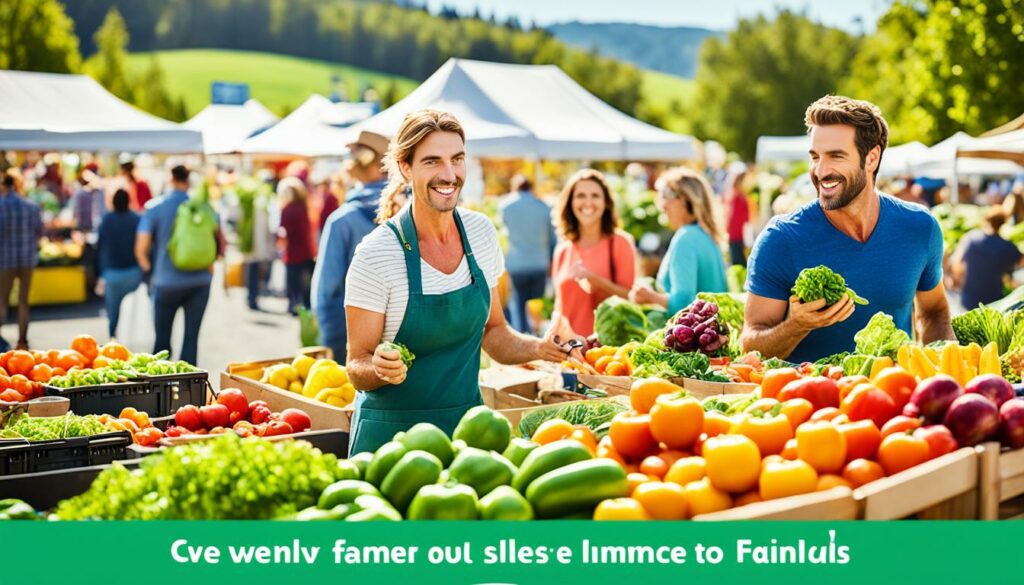
Besides social media, a user-friendly farm website is crucial. Your site is a key place to share all about your farm’s product and practices. Make sure it’s easy to use and has great pictures of your farm’s goods to interest visitors.
Don’t forget to add a blog. This is where you can talk about your farm’s mission and values. Also, consider an online store. It makes it easier for customers to buy your products directly.
By using these online tools, you can share details about your farm and reach more people. This can help boost your sales of seasonal items.
In the world of agritourism, telling stories helps you connect with customers. When you share your farm’s history and values, you stand out. You also create an important bond with your customers.
Telling stories about your farm can change how people see you. Describe your eco-friendly efforts, special crops, and community work. This helps people really understand your food’s journey. It also fits well with what customers want – real, hands-on experiences.
Making a personal connection with your customers is key today. Social media lets you show the real side of your farm. This includes the daily activities. These stories make people feel part of your farm, leading to loyalty. Plus, when people share these stories with friends, it really helps your business grow.
| Strategy | Impact |
|---|---|
| Sharing Farm History | Creates a deeper emotional bond and enhances brand loyalty. |
| Highlighting Sustainable Practices | Appeals to eco-conscious consumers, increasing their connection. |
| Utilising Social Media Stories | Offers real-time engagement and a glimpse into everyday farm life. |
| Incentivising Referrals | Boosts word-of-mouth marketing and repeat visits. |
To wrap it up, telling good stories and making personal links are crucial in getting and keeping customers. The trend of agritourism shows how important your farm’s unique story is. It’s all about building strong, lasting relationships with people.
Sharing recipes is a great way to boost seasonal fruits and vegetables. It inspires people to buy more. Websites like Pinterest and All Recipes are perfect for this. They make it easy to share eye-catching recipes.
Pinterest and All Recipes are great for showing off new recipes. People can find, save, and share recipes easily. Plus, they can find recipes by searching for specific ingredients. Consistent sharing on these platforms keeps our farm’s produce in the spotlight.
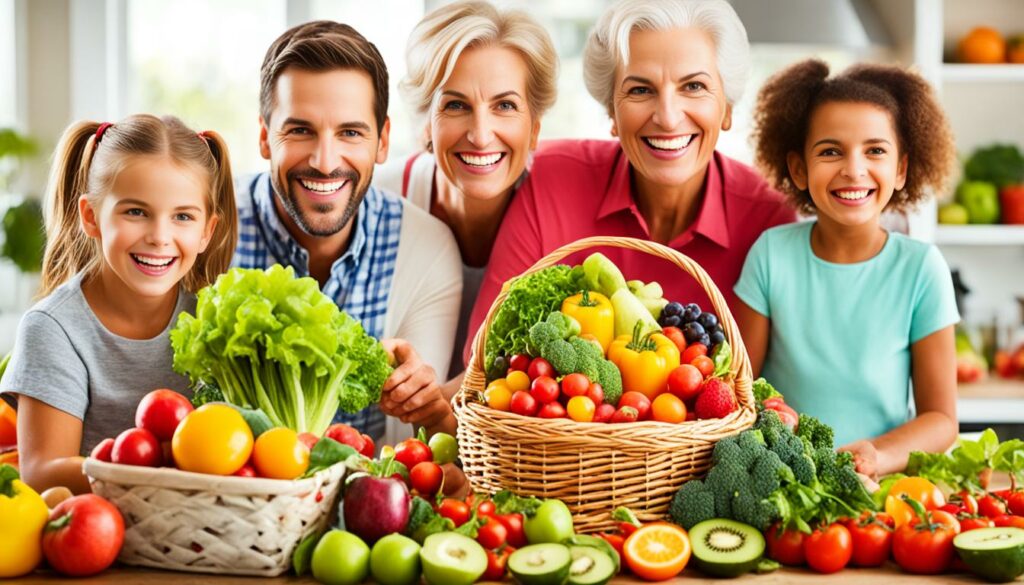
Posting on these platforms also helps get more people involved. For example, having boards just for summer fruits can lead people to what we’re selling now.
Encouraging our customers to share their recipes is powerful. It builds community and gives us real, engaging content. We can do this through contests or by asking them to tag us when they share their creations. This strategy increases our farm’s exposure and gives us plenty of material for future marketing.
We can also partner with local bloggers and critics. They have a big following. Their support can make seasonal produce more popular.
| Strategy | Action | Benefit |
|---|---|---|
| Seasonal Hashtags | Create unique hashtags for each season. | Encourages audience engagement and content tagging. |
| Visual Content Platforms | Utilise Instagram and Pinterest for posting recipes and photos. | Attracts visually oriented users and inspires purchases. |
| Analytics Tools | Measure the success of posts and adjust strategies accordingly. | Enables data-driven decision-making and optimisation. |
Creating seasonal farm product campaigns requires a focus on when and what you market. It’s key to link your promotions with the harvest times. This shows off the freshness of your goods. Plus, it keeps your ads current.
To make your seasonal farm product campaigns work, plan based on when crops are ready. Look at sales history and what customers like. This helps you find the best times to push certain items. It makes your marketing more effective.
Showcasing that your goods are fresh and top-quality is vital in farm marketing. People love buying things they see as fresh and local. Think of Starbucks with its seasonal items. They make people want to buy more by creating a “get it while you can” vibe.
Follow these best practices in farm marketing to make your seasonal farm product campaigns really work. They’ll help boost your sales and keep your customers coming back. Also, keep your look consistent but change it with the seasons. This way, your brand looks and feels complete all year.
Teaming up with local businesses can boost a farm’s community standing. This benefits all involved. It helps farms reach more customers and sell more.
Working with restaurants that use seasonal produce is a great idea. By showcasing this on social media, farms and eateries can both win. It highlights the farm’s products and shows their freshness, attracting new customers.
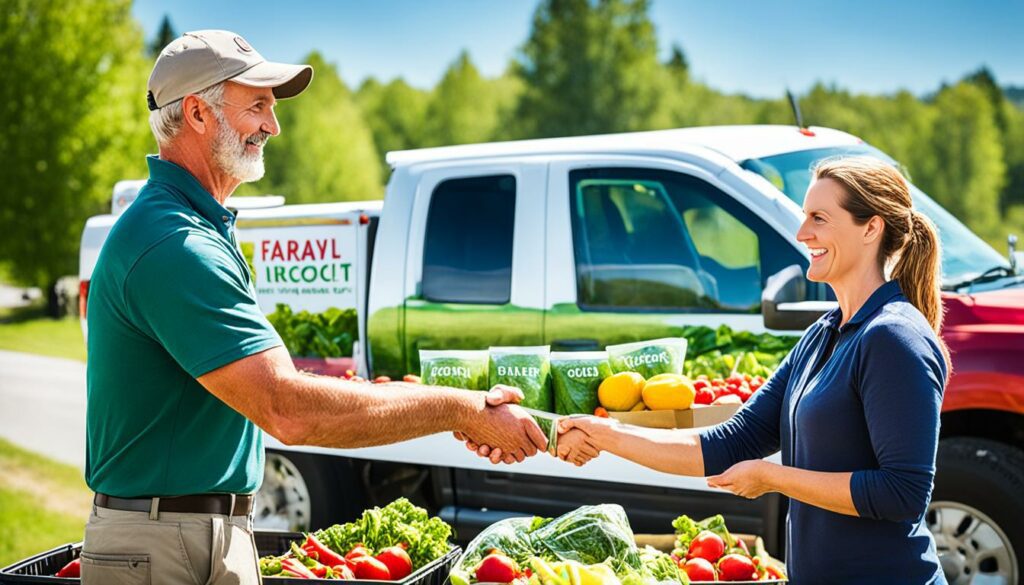
There’s also a need to educate the public about local farming’s benefits. Campaigns can show how buying local helps in many ways. This includes health, the environment, and the freshness of the food.
Such campaigns really make a difference. “Buy Local” efforts have increased local food sales to nearly $5 billion in 2008. This growth highlights the ongoing need for teamwork in promoting local goods.
Teaching about local foods in schools is another vital step. It starts kids appreciating local farms early. These initiatives point out the health benefits, encouraging smart food choices.
It’s vital for all, including farmers and governments, to join in on awareness campaigns. By working together, they can share the good news about local farming widely. This makes for a more supportive community.
“Local food culture promotions not only boost sales but also foster a sense of pride and connection to regional products,” says an agricultural expert.
The 2007 Agriculture Census found over 12,500 farms using CSAs, showing a preference for direct sales. Farmers’ markets also play a key role in local networking. They connect producers with their customers, building communities.
In conclusion, working together in marketing and networking benefits everyone. It strengthens communities and supports local agriculture. This teamwork helps businesses and farms thrive, which is good for all.
In the fighting world of grocery retail, showing off your sales matters a lot. With big stores and online shops everywhere, smaller businesses must be clever to get noticed. Using farm-fresh adverts is one smart way to get people interested.
When you offer deals is key. If you match them with busy shopping times or special events, you get more people in your shop. Everyone looks forward to these times because they make shopping more fun. For instance, talking about new fresh fruits when they first come out can really get people excited to visit. And social media helps a lot with spreading the word.
Making products seem rare can really boost sales. When items are for a limited time, people tend to buy quick, not wanting to miss out. This feeling is even stronger if you talk about these deals on social media. Letting everyone know a particular fruit is in season for a very short while could draw them in.
| Strategy | Effectiveness |
|---|---|
| Timing Promotions with Seasons | High |
| Creating a Sense of Scarcity | Very High |
| Utilising Social Media for Announcements | Moderate to High |
By promoting fresh farm deals, you don’t just make more money. You also win over customers who’ll keep coming back. These methods make your ads stand out and push people to buy right away.
Customer feedback helps make our farm’s marketing better and meets what people want. By talking with our audience, we learn what they need and like. This helps us make what we offer better, which makes customers happier.
Everyone’s opinion counts in farming. It helps us change with the market and know what people love about fresh, local food. Today, 90% of U.S. adults use the internet, showing how important digital feedback is.
Listening to feedback helps us improve the farm. We serve what customers want, keeping them satisfied and coming back. For example, CSA farms adjust their weekly boxes to what their members like.

| Aspect | Benefits | Data Points |
|---|---|---|
| Improve Produce Quality | Enhanced client satisfaction and product loyalty | High nutritional value of local produce |
| Reduce Food Miles | Lower carbon dioxide emissions | Reduces global warming |
| Healthier Practices | Fewer chemicals used | Cleaner and healthier produce |
Joining niche communities helps farmers be known and trusted in certain markets. By sharing what they know, farmers become trusted sources and make good connections with buyers. This also helps them learn what the market wants.
Farmers can show their knowledge in specific crops or methods by being active in the right groups. For example, urban farming is growing thanks to its green benefits. By helping out, organising events, and sharing information, a farm can stand out in the community.
Creating things like community gardens with the help of others builds strong connections and trust.
Participating in online groups and forums is great for getting involved in the farming community. These places help me understand what customers like and how they act. This info is key for making plans that will grab people’s interest, especially during special times.
Watching what others say about seasonal products lets me adjust my own plans. For example, knowing people love Pumpkin Spice Lattes or special Oreo flavours helps me make choices that match, drawing in more customers.
| Engagement Activity | Benefits |
|---|---|
| Participating in Online Forums | Builds credibility and accesses consumer insights. |
| Hosting Local Events | Enhances community visibility and trust. |
| Providing Educational Resources | Establishes authority and encourages community support. |
| Volunteering | Fosters local engagement and strengthens farmer-consumer relationships. |
Smart involvement in these groups not only makes farmers more trusted but also helps them match their plans with what customers like. This improves their impact on the market.
It’s vital to keep our customers updated on how weather affects crops. We share these updates often on social media. The world spends over $50 billion every year on weather forecasts for good reason. They help a lot with planning for farming.
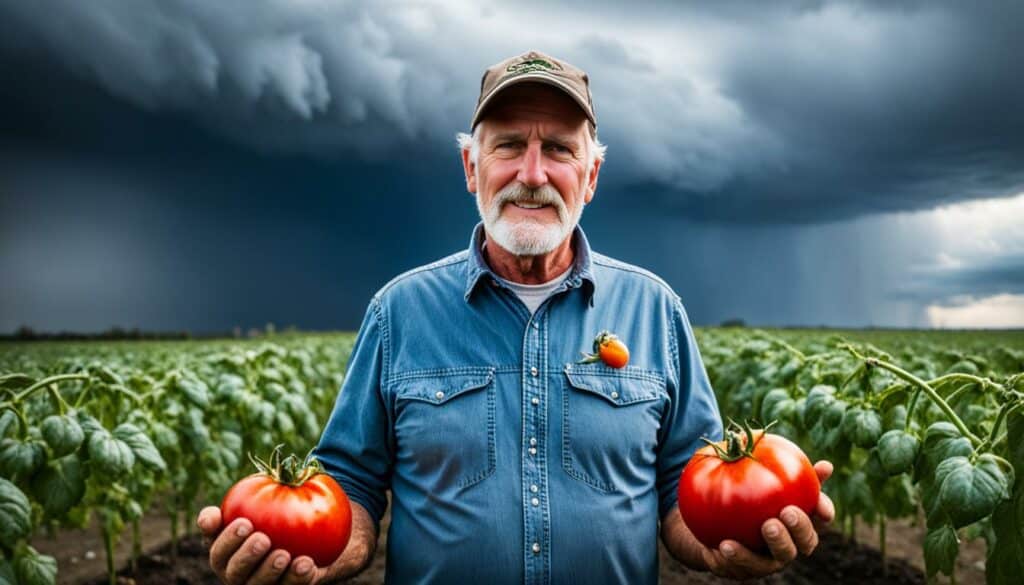
Small farms in places like South Asia and Africa could see big benefits from better forecasts. Around 260-305 million of these farms could make smarter choices. For them, knowing the weather is key, since most of what they grow is cereals.
Studies show that if farmers know the weather well, they can make more money. But, in some places, the forecast isn’t very accurate due to not having enough resources. This makes it hard for farmers to plan ahead.
Our aim is to make weather info easy to understand and act on. For example, if the weather looks good or bad, we want to let farmers know quickly. This honesty helps in building a strong relationship, especially when things are tough.
Investments of about $300 million are made every year to make forecasts better. And not just for farming. More accurate forecasts also help in preparing for natural disasters. So, these investments really count for a lot more.
When we talk about the weather, we use terms like ‘above normal’ or ‘below normal’. We call these ‘tercile probabilities’. Each one has a one-in-three chance of happening. Making this info clear helps our customers understand the risks and needs better.
By sharing updates, I hope we can make farmers feel more connected and supported. Social media updates for farms shouldn’t just inform. They should also give hope and a sense of belonging, especially in these uncertain farming times.
Keeping your social media interesting means always coming up with new ideas for seasonal farm goods. It’s important to look at what’s sold well in the past, what people are searching for, and how they interact on social media. This helps you understand what your followers like and plan your posts well.
Got to have good brainstorming sessions for new ideas. Use special days like Mother’s Day and Easter as clues. They’re days when everyone wants flowers, gifts, and sweets. Doing things like polls and contests makes people more interested and loyal to your brand, especially in spring and summer when people are super busy. February is a great time to start, so you have all the tweaks and tests done before the peak time.
Don’t forget, recycling old popular posts is savvy. Pick out the ones that did best before and give them a fresh look. Changing popular blog posts into Instagram stories or Facebook posts is a good move. Also, updating your images so they fit the season makes your brand stay on top. Remember, Forbes says 74% of people buy more after they’ve connected with a brand event.
Adding educational content and supporting things like local farming wins you more fans. Cone Communications found 87% of people like brands that support causes they care about. So, mix up new and meaningful content to keep your farm posts exciting and impactful.
Social media campaigns help promote seasonal farm items. They improve farm-to-table marketing and highlight sustainable foods. Websites like Facebook enable farmers to communicate in real-time. They can share updates on produce and gather feedback, building customer relationships.
Platforms like social media are great for following food trends. They connect farmers with customers through ads and promotions. This helps keep farm offerings updated and interesting to people.
Using images and videos makes the farm feel closer to its customers. By sharing photos and clips, farms show their behind-the-scenes. This draws people in who might not know much about farming. It also helps advertise their seasonal produce better.
To create a strong online presence, focus on social media and a good website. These steps are key to promoting farm items efficiently. They also help in keeping in touch with customers, building ongoing relationships.
Telling stories helps people feel more connected to the food they eat. It makes customers care more about the farm’s success. By sharing tales about the farm’s past and its values, a farm can inspire customer loyalty.
Use platforms like Pinterest to share recipes with seasonal produce. Asking customers to share their recipes boosts interaction. This way, more people see and buy the fresh items you offer.
Try to focus your campaigns around harvest times. Highlight the freshness and quality of your products. This effort ensures consumers know when to get the best local produce, making the most of your campaigns.
Collaborating with nearby companies can attract more customers to your farm. For example, supporting local restaurants on social media can benefit both parties. It introduces new clients to your farm while promoting your shared use of seasonal produce.
Timing is key, especially during busy seasons. Use this time to offer limited deals on fresh produce. Such farm-fresh marketing and special offers drive up sales significantly.
Customer feedback helps farms tailor their marketing to what people want. It improves the overall customer experience. By listening and acting on feedback, farms can make better products and keep customers happy.
Being active in online groups boosts your farm’s reputation within specific markets. Engaging in conversations about your crop or method keeps you known and trusted. It’s a way to stay connected with your target audience.
Use social media to keep customers updated on how weather affects your crops. Sharing such news makes people understand the challenges you face. It helps build a more supportive and loyal customer base.
Always come up with new and creative ways to post about your seasonal products. Regularly reviewing your content strategies and reusing what works can help. This way, your posts will stay engaging, even when creativity seems to wane.